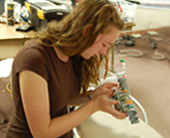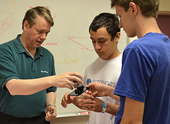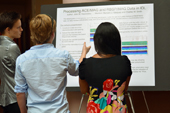Teacher Information
SPACE SCIENCE RESEARCH begins with the Sun—the source of light and heat, but also a source of an expanding ionized gas called plasma that fills the space between the planets.
Solar activity can lead to changes in the near-Earth environment as benign as the aurora and as significant as regional power outages. The sun is also a source of energetic charged particles called radiation than can disable spacecraft and endanger astronauts.
UNH Physics faculty and research staff working on Project SMART are actively engaged in obtaining a better understanding of solar activity and solar eruptions, the evolution of the interplanetary gas, it's interaction with the near-earth environment, the production of aurora, and the prediction of power outages. They build instruments to fly in space, analyze data returned by those instruments, and develop theories and computer simulations to model the dynamics of the coupled systems.
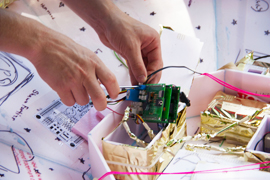 |
||
| Balloon payload, developed by Project SMART students and their mentors. | ||
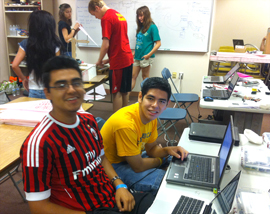 |
||
| SMART study group |
One Project SMART Space Science project has been a helium balloon experiment. The balloons carry miniaturized video and still cameras,and scientific payloads that include a computer microcontroller that gathers data and controls aspects of the flight.
At the close of the Project SMART Insitute, students present posters on research projects done in collaboration with physics faculty who are building instruments for upcoming satellite missions or analyzing data from past and current missions involving UNH.
"The students are doing real science that is not coming out of a textbook. They build the satellite components, launch what they created to collect real environmental and performance data and get it back for analysis. It's a very rich experience for them." |
Link to more teacher information...
